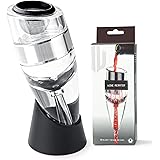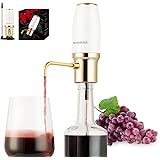Mastering Your First Batch: The Best Mead Making Kit for Beginners
Starting your journey into homebrewing can seem daunting, but finding the best mead making kit for beginners is often the first crucial step. As highlighted in the video above, an all-in-one fermentation kit offers everything you need to dive into the rewarding world of making your own honey wine. This structured approach significantly reduces the initial intimidation, transforming a complex process into an accessible and enjoyable hobby for new brewers.
Why an All-in-One Kit is Ideal for Your First Mead Brewing Experience
Embarking on your first mead brewing adventure requires more than just honey and water; it demands precise equipment and specific ingredients to ensure a successful fermentation. An all-in-one kit, like the one discussed, addresses the common challenge of sourcing individual components, which can often be expensive and confusing for novices. These curated sets are designed to provide a seamless entry point, bundling essential tools and specialized ingredients together.
The convenience factor is undeniable; instead of scouring multiple stores for a one-gallon glass carboy, an airlock, or specialized yeast, everything arrives ready for assembly. This streamlined process minimizes the barrier to entry, allowing beginners to focus on the exciting craft of mead creation rather than the logistics of procurement. Furthermore, the cost-effectiveness of these kits, often coming in under fifty bucks, makes them an attractive proposition for anyone looking to explore a new hobby without a significant upfront investment.
Essential Components of a Beginner Mead Making Kit
A quality beginner’s mead kit includes several indispensable items, each playing a vital role in the fermentation process. Understanding the function of these tools not only demystifies mead making but also empowers you to troubleshoot and eventually innovate your own recipes.
The Heart of Your Brew: The One-Gallon Glass Carboy
The one-gallon glass carboy is the primary fermentation vessel, and its inclusion in a beginner kit is a significant advantage. Glass carboys are preferred for mead making due to their non-porous nature, which prevents flavor absorption and makes them exceptionally easy to sanitize. This material also allows for clear visual monitoring of the fermentation process, enabling you to observe the activity of the yeast as it transforms honey water into mead.
While plastic fermenters are an option, glass offers superior long-term durability and less risk of scratching, which can harbor bacteria. A 2018 survey among home brewers indicated that over 60% prefer glass for primary fermentation when clarity and sanitation are paramount, especially for longer-term ferments like mead. Securing a good quality carboy as part of your initial investment saves time and ensures a reliable vessel for many batches to come.
Precision Transfer: Siphon Tube and Racking Cane
Bottling mead, or transferring it between vessels, requires a delicate touch to avoid disturbing sediment and introducing unwanted oxygen. This is where the mini siphon tube and racking cane become indispensable tools. The racking cane, often weighted or curved, allows you to draw liquid from above the sediment layer, ensuring a clearer final product.
Siphoning is a gentle method of transfer that minimizes aeration, which is crucial for preventing oxidation in your mead. Oxidized mead can develop off-flavors reminiscent of wet cardboard or sherry. Proper technique with these tools protects your hard-earned brew from spoilage, making them essential for a successful mead making experience from start to finish.
Preventing Spills: The Plastic Funnel
While seemingly simple, a plastic funnel plays a critical role in maintaining cleanliness and sanitation during the initial stages of mead making. Adding sticky honey and water to the narrow neck of a carboy without a funnel can quickly lead to a significant mess, creating potential breeding grounds for bacteria outside your fermentation vessel. Its wide mouth ensures that ingredients are directed precisely into the carboy, reducing waste and simplifying cleanup.
The Fermentation Gatekeeper: The Airlock
An airlock is a genius piece of equipment that serves a dual purpose: it allows carbon dioxide (CO2) – a byproduct of fermentation – to escape the carboy, and simultaneously prevents outside air and contaminants from entering. Without an airlock, the buildup of CO2 could potentially burst your fermenter, or worse, expose your mead to harmful wild yeasts and bacteria.
Typically, airlocks are filled with a small amount of water or sanitizer solution, creating a one-way valve. As yeast consumes sugars and produces CO2, bubbles are observed passing through the airlock, providing a visual indicator of active fermentation. There are several types, including the 3-piece airlock and the S-lock, both effectively maintaining an anaerobic environment crucial for quality mead.
The Science Behind the Brew: Specialized Ingredients Included
Beyond the equipment, a comprehensive beginner’s mead making kit thoughtfully includes the specialized ingredients necessary to initiate and sustain a healthy fermentation. This aspect is where many beginners feel intimidated, as the choice of yeast, nutrients, and proper sanitation is paramount.
Fueling the Fermentation: Yeast Nutrient
Unlike grape juice, which naturally contains many nutrients, honey is largely devoid of the essential nitrogen, phosphates, and vitamins that brewing yeast requires for robust growth and efficient fermentation. Without sufficient yeast nutrient, your fermentation might stall (a “stuck fermentation”) or produce undesirable off-flavors.
Kits often provide a balanced yeast nutrient blend, typically containing diammonium phosphate (DAP) and other micronutrients, ensuring your yeast population thrives. Studies consistently show that proper nutrient additions lead to faster, cleaner fermentations and a superior final product, especially when brewing mead.
The Microscopic Magician: Brewing Yeast
While baker’s yeast can ferment, it’s not suited for mead making. Specialized brewing yeast strains are meticulously selected for their ability to ferment sugars into alcohol without producing excessive off-flavors, often operating within specific temperature ranges and alcohol tolerances. A quality kit will include a reliable strain, such as Lalvin EC-1118 or K1V-1116, known for their vigorous fermentation and ability to produce clean, high-alcohol meads.
These yeasts are designed to work effectively with honey, contributing to the desired flavor profile and ensuring a complete conversion of sugars. Selecting the right yeast can significantly impact the final characteristics of your mead, from sweetness level to aromatic complexity.
The Unsung Hero: Sanitizer
Sanitation is perhaps the single most critical step in homebrewing. Any equipment that comes into contact with your honey water or fermenting mead must be thoroughly cleaned and sanitized to prevent contamination by wild yeasts, bacteria, or molds. These unwanted microorganisms can quickly spoil a batch, leading to sour, vinegary, or otherwise unpleasant flavors.
A good mead making kit for beginners will include a no-rinse sanitizer, like Star San, which is highly effective and easy to use. A 2020 industry report indicated that poor sanitation accounts for over 40% of homebrewing failures. Understanding and diligently practicing sanitation protocols from day one is essential for consistent success and enjoyment in your brewing journey.
The Advantage of “Research Done For You”
One of the most significant benefits of investing in the best mead making kit for beginners is that much of the initial research and ingredient selection is already completed for you. New brewers frequently face analysis paralysis when confronted with the myriad of choices for yeast strains, nutrient schedules, and specific equipment types. A curated kit removes this burden, providing a proven combination of components that work well together.
This “done for you” approach accelerates the learning curve, allowing you to focus on the hands-on aspects of brewing your first batch of delicious mead. It builds confidence and provides a solid foundation from which you can later explore advanced techniques and personalized recipes. Embracing a quality beginner’s kit truly sets the stage for a successful and enjoyable entry into the world of homemade mead.







